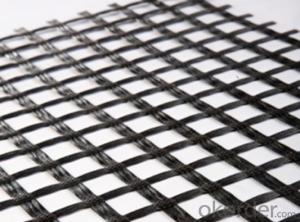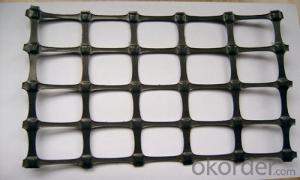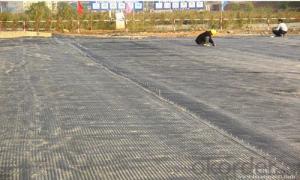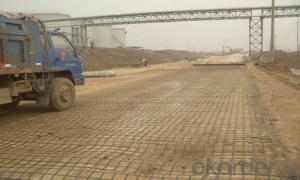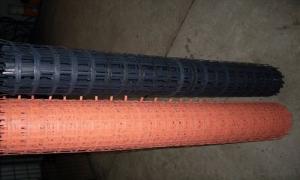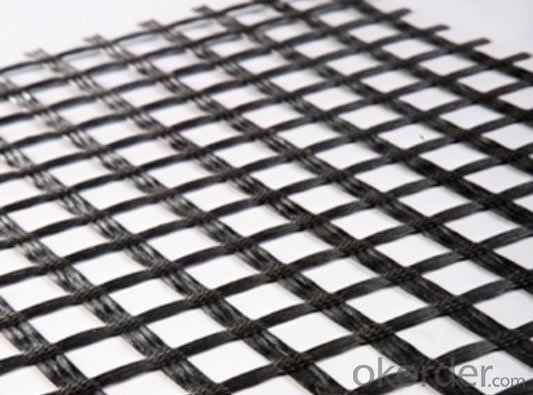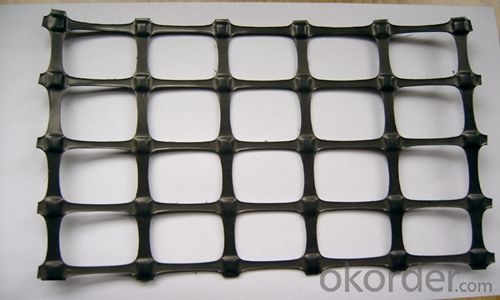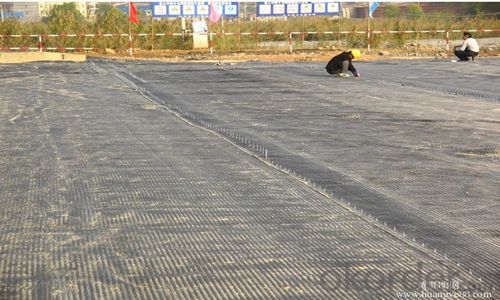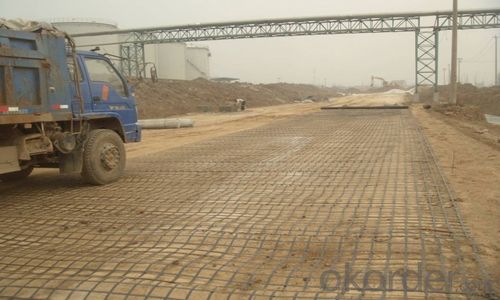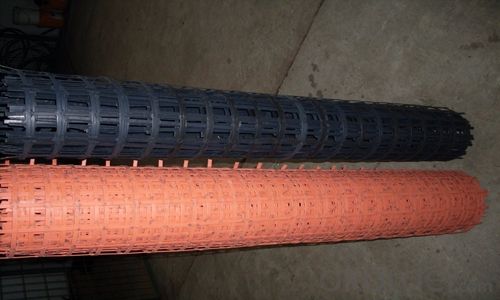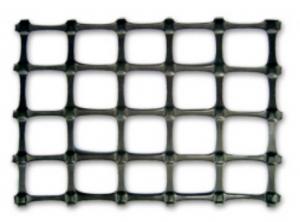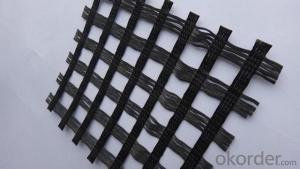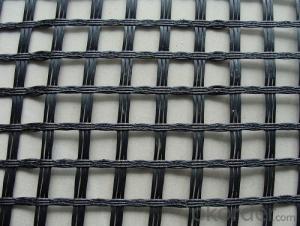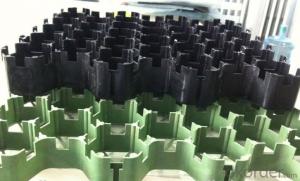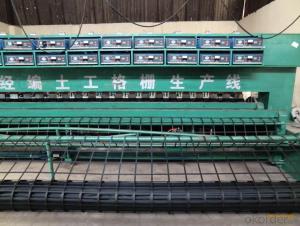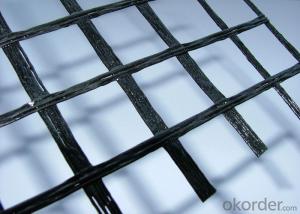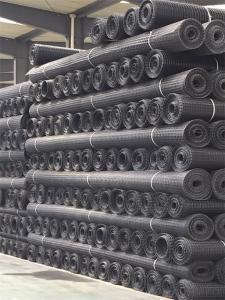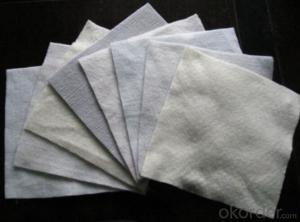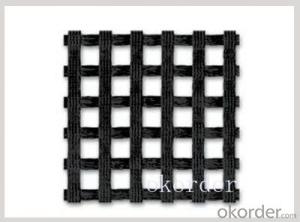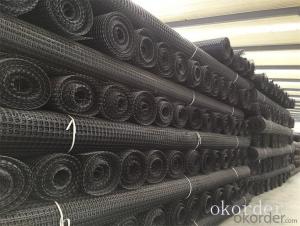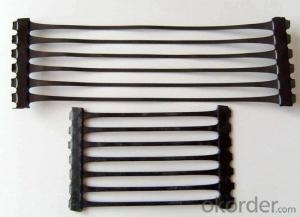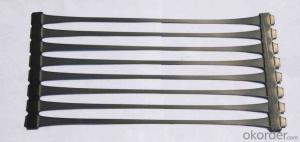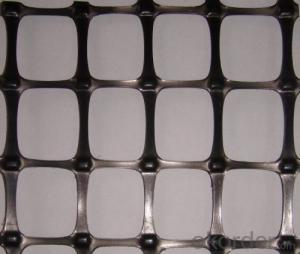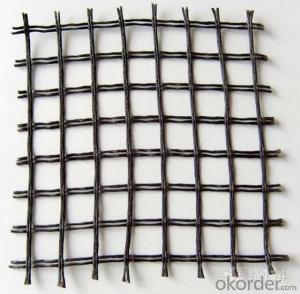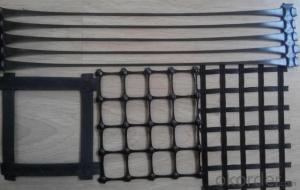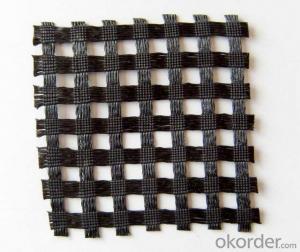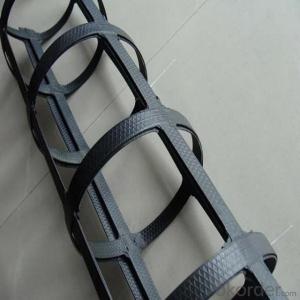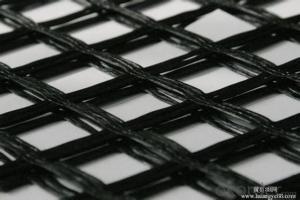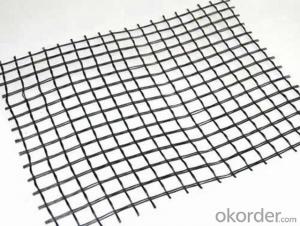Base Reinforcement Geogrids for High Density Biaxial Geogrids in Highway for Civil Engineering Construction
- Loading Port:
- China main port
- Payment Terms:
- TT OR LC
- Min Order Qty:
- 1000 m²
- Supply Capability:
- 10000000 m²/month
OKorder Service Pledge
OKorder Financial Service
You Might Also Like
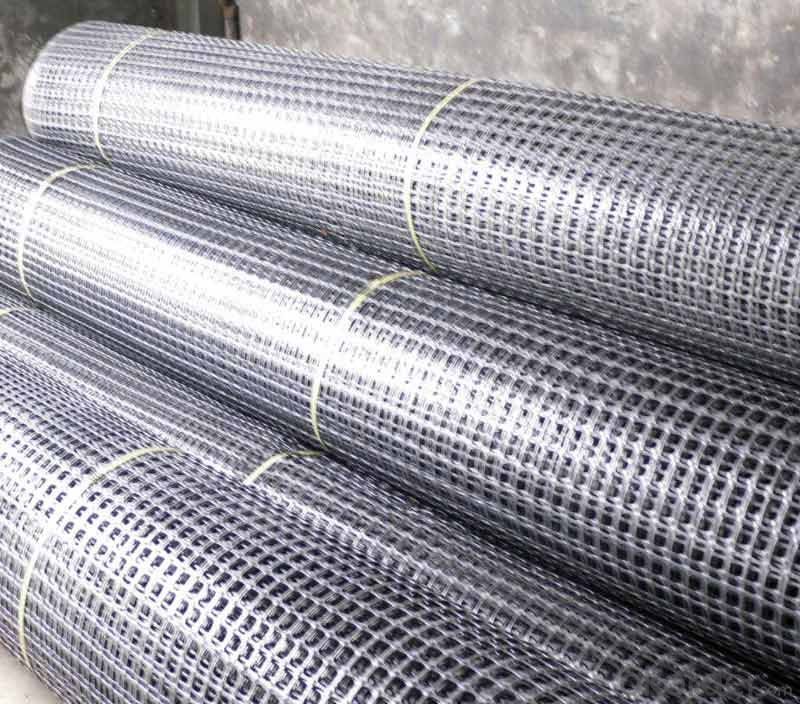
Introduction
Type:
Geogrids
Place of Origin:
Shandong, China (Mainland)
Brand Name:
OEM or Road
Model Number:
EGA50-50, EGA80-80, EGA100-100
We have three types of Geogrids; extruded, woven and bonded. Extruded Geogrids are flat structures in polymer (usually high density polyethylene or polypropylene) that are extruded and then pulled: this may be done in one direction (mono-oriented geogrids), or in the two main directions (bi-oriented geogrids). They are used in soil and road paving reinforcement.
Bonded Geogrids are flat structures, where two or more series of strip elements made of polyester coated with polyethylene, are linked at regular intervals by means of bonding.
Woven Geogrids are flat structures in the shape of a net made of high module synthetic fibres, that may also be coated with a further protection layer, using synthetic material (usually PVC or other polymer).
Geogrid application filled with ground material is one of the easy of soil reinforcement. The thickness of such construction may be 50% less than the thickness of standard replacement which allows avoiding costly soil replacement.
Our Service
Quality assurance
1.On a regular basis or as per your request,we entrust national testing agencies to conduct quality inspections
2. Strictly in accordance with the ISO9001-2008 international quality system standard,we monitor and manage the whole process throughout production,quality testing,and measurement to ensure product quality
3. For quality-related construction delay or substandard construction(except for damage or losses due to customer’s responsibility or irresistible natural disasters),we have refunding,replacement,and repair services.We will respond to customers’ feedbacks on quality issues within 24 hours.
Packaging & Shipping
Packing: PLASTIC FILM INSIDE, AND WOVEN BAG OUTSIDE
Shipping: About 15 days after receipt the deposit
FAQ:
Q: What kind of payments does jenor support?
A: T/T, L/C, Cash are accepted.
Q: Do you charge for the samples?
A: Accordeing to our company policy, the samples are free, we only charge the freight fee. And we will return the freight fee during the next order.
Q: Can you produce according to customers' design?
A: Sure, we are professional manufacturer, OEM and ODM are both welcome.
Q: Do you have other products?
A: Yes, please check the pictures:
- Q: Are geogrids fire-resistant?
- No, geogrids are not typically fire-resistant.
- Q: 0.3m drainage geogrid
- Ask a lot of questions asked to know
- Q: Are geogrids suitable for use in high water table areas?
- Yes, geogrids are suitable for use in high water table areas. Geogrids are commonly used in construction and civil engineering projects to provide soil stabilization and reinforcement. They are designed to withstand high water table conditions, making them an effective solution in such areas. Geogrids can help distribute loads, increase soil strength, and prevent soil erosion, making them a reliable choice for projects in high water table areas.
- Q: What are the different installation methods for geogrids?
- There are several different installation methods for geogrids, including direct burial, mechanical anchoring, and adhesive bonding. Direct burial involves placing the geogrid in the soil and covering it with additional soil to secure it in place. Mechanical anchoring involves using pins or stakes to anchor the geogrid to the soil or other structures. Adhesive bonding involves using a specialized adhesive to bond the geogrid to a surface, such as a retaining wall. The choice of installation method depends on the specific project requirements and conditions.
- Q: The difference between two way steel plastic grille and one way steel plastic grille
- One way steel plastic geogrid is longitudinal tension requirements, only to detect the longitudinal tension
- Q: What are the factors that affect the durability of geogrids?
- Several factors can affect the durability of geogrids, including the type of material used, the manufacturing process, the installation technique, the environmental conditions, and the level of stress or load applied to the geogrid. Additionally, the presence of chemicals, such as acids or alkalis, can also impact the durability of geogrids. Proper selection and installation, along with regular monitoring and maintenance, can help ensure the long-term durability of geogrids.
- Q: Can geogrids be used in foundation stabilization?
- Yes, geogrids can be used in foundation stabilization. They are commonly used in civil engineering and construction projects to reinforce soil and improve the stability of foundations. Geogrids are typically installed horizontally or vertically within the soil to distribute loads and prevent soil movement, thereby enhancing the overall stability and performance of foundations.
- Q: Are geogrids suitable for use in mining tailings ponds?
- Yes, geogrids are suitable for use in mining tailings ponds. Geogrids are a type of geosynthetic material that offer excellent strength and stability, making them ideal for reinforcing and stabilizing soil and other materials in various applications, including tailings ponds. They can help prevent erosion, improve drainage, and enhance the overall stability of the pond. Additionally, geogrids are resistant to chemical degradation, which is important in mining environments where tailings may contain potentially harmful substances.
- Q: Can geogrids be used in coastal erosion control?
- Yes, geogrids can be used in coastal erosion control. Geogrids are designed to reinforce and stabilize soils, making them effective in preventing erosion along coastal areas. They can be used in various applications such as beach restoration, slope stabilization, and shoreline protection, helping to mitigate the effects of coastal erosion.
- Q: Are geogrids suitable for use in mechanically stabilized embankments?
- Yes, geogrids are suitable for use in mechanically stabilized embankments. Geogrids provide reinforcement and stability to the embankment by distributing and restraining the forces exerted on the soil. They help prevent the lateral movement of the soil and improve load-bearing capacity, making them a reliable choice for mechanically stabilized embankments.
Send your message to us
Base Reinforcement Geogrids for High Density Biaxial Geogrids in Highway for Civil Engineering Construction
- Loading Port:
- China main port
- Payment Terms:
- TT OR LC
- Min Order Qty:
- 1000 m²
- Supply Capability:
- 10000000 m²/month
OKorder Service Pledge
OKorder Financial Service
Similar products
Hot products
Hot Searches
Related keywords
